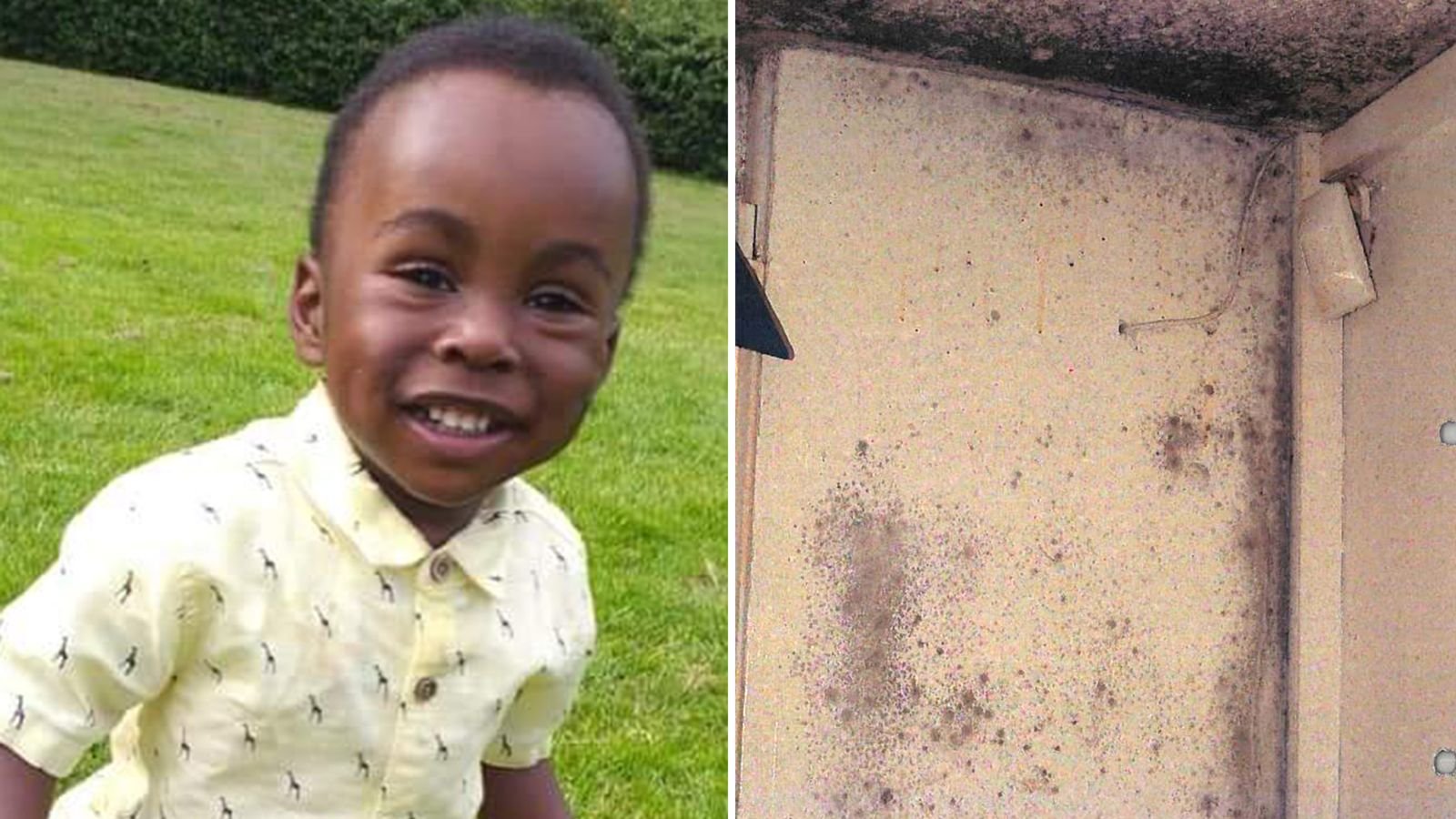The government has announced that, starting in October, social landlords in England will be legally required to investigate and resolve issues related to damp and mould in social housing within strict timescales. This measure comes after the tragic death of two-year-old Awaab Ishak, who passed away in 2020 due to prolonged exposure to mould in his home in Rochdale. The new regulations, dubbed Awaab’s Law, aim to prevent further tragedies like this one.
Implementation of Awaab’s Law
The introduction of Awaab’s Law will be phased in. From October, social landlords — typically local councils or housing associations — will be obligated to repair emergency hazards, such as damp and mould, within 24 hours of being notified. These urgent measures will be the first to take effect.
However, not all provisions of the law will be implemented immediately. The full scope of Awaab’s Law will be rolled out gradually, with regulations regarding other hazards, such as structural issues, electrical faults, and excess cold or heat, set to take effect no earlier than 2026. While these delays have sparked concern, housing charity Shelter has emphasized that these measures could put tenants’ health and safety at risk, especially since these hazards often cause long-term harm.
Delayed Implementation of Other Hazards
While damp and mould will be prioritized, other critical issues like fire safety, electrical faults, and hygiene hazards will not see new deadlines for investigation until 2026, with full enforcement likely not in place until 2027. These delays have caused concern among advocates, as these issues can be equally dangerous to tenants’ well-being.
Previously, under Conservative proposals, social landlords were expected to investigate reported hazards within 14 days and take action if the hazard posed a significant risk to health and safety within 7 days. Those who failed to comply faced legal action and the possibility of paying compensation to affected tenants.
Government’s Stance and Future Measures
In a written statement, Deputy Prime Minister Angela Rayner explained that the phased implementation of Awaab’s Law was designed to bring quicker relief for tenants dealing with damp and mould. The government aims to ensure these changes are effectively tested and that housing providers can adjust to the new regulations without compromising tenant safety.
By 2026, the law will extend to cover a broader range of non-emergency repairs, including structural issues and fire safety. However, overcrowding will not be addressed under this phase of the law.
Despite the phased approach, the government emphasized that social landlords must continue to meet their existing duties under housing law. They are already required to ensure that homes are fit for habitation and free from hazards that pose a risk to health and safety.
Industry Reactions
Polly Neate, Chief Executive of Shelter, criticized the phased rollout, expressing concern that tenants would have to wait too long for full protections. She called on the government to fully implement Awaab’s Law without further delays, emphasizing that it was crucial for safeguarding tenants’ health.
On the other hand, Kate Henderson, Chief Executive of the National Housing Federation, which represents housing associations, affirmed the sector’s commitment to preventing future tragedies. However, she also pointed out that housing associations are currently facing unprecedented financial pressures and argued that overcrowding — a major factor contributing to damp and mould issues — could only be resolved through increased funding for new social housing.
Extending Awaab’s Law to the Private Sector
The government also intends to extend Awaab’s Law to the private rented sector. This expansion will be included in the Renters’ Rights Bill, which is currently under review in Parliament. Ministers hope the law will be passed by the summer. According to the English Housing Survey, damp problems are more common in privately rented homes, with 9% of privately rented homes affected, compared to 7% of social housing.
The Government’s Commitment to Tenant Safety
Angela Rayner, who serves as both the Deputy Prime Minister and the Housing Secretary, expressed the government’s firm stance on tenant safety. She emphasized the moral duty to ensure that tragedies like Awaab Ishak’s death never occur again, stating that landlords cannot be allowed to rent out dangerous homes that jeopardize the lives of their tenants.
Key Points of Awaab’s Law:
- Damp and mould will be addressed immediately, with landlords required to fix issues within 24 hours.
- Full implementation of protections for other hazards will occur in phases, with 2026 being the next major step.
- The private rented sector will also be subject to the law, with new regulations to be introduced in the Renters’ Rights Bill.
Awaab’s Law is a landmark step in improving the safety and quality of housing for tenants in England. While the phased approach has drawn some criticism, the ultimate goal is to ensure all homes meet acceptable living standards and that tragic incidents like Awaab Ishak’s death are prevented in the future.




